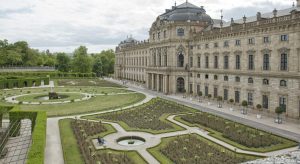Flowers, topiary, pergolas – Architecture and nature in the Court Garden of the Würzburg Residence
(Photo@SGV – Pia Obscura) Like the Baroque palace itself, the Court Garden of the Residence palace has been a UNESCO World Heritage Site since 1981. Prince-Bishop von Seinsheim had the garden laid out in the Baroque spirit.
Over the centuries, however, it has also undergone completely different fashions and is still constantly changing. The garden used to be dominated by palm trees, potted plants and exotic fruit trees. Today, the palace administration is restoring as many garden elements from the Baroque period as possible.
We stroll through the Italian east garden, the French south garden and the English garden, retrace the planning and hear stories about the stone figure groups. On the old city bastion, you can see the garden and the palace from above. In the restored kitchen garden, the palace administration revives the old horticultural craftsmanship of topiary.
Meeting point: Entrance to the courtyard garden gate next to the court church
Click here for my fees and here you can book me
Summer and garden pleasures –
strolling in Veitshöchheim´s Rococo garden
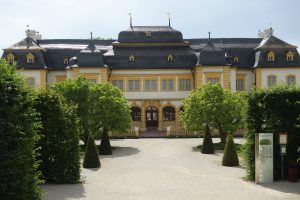 The court garden of Veitshöchheim was designed at the end of the 18th century as a supplementary program for the “summer house” of the Würzburg prince bishops. It is considered one of the most beautiful of its kind in Germany, if not in Europe. From a swamp near the Main river it was changed into a flower garden with Fasanerie and went through turbulent times. From 1763, prince-bishop of Seinsheim had it expanded into a typical Rococo court garden.
The court garden of Veitshöchheim was designed at the end of the 18th century as a supplementary program for the “summer house” of the Würzburg prince bishops. It is considered one of the most beautiful of its kind in Germany, if not in Europe. From a swamp near the Main river it was changed into a flower garden with Fasanerie and went through turbulent times. From 1763, prince-bishop of Seinsheim had it expanded into a typical Rococo court garden.
In the three areas of the 13-hectare garden, you will find a forest, an arbor and a lake area, strolling along tree-lined avenues and hedgerow paths. The legendary viewpoints open up surprising perspectives on horseshoe halls, pavilions and rondels. The Great Lake with the Parnass Group is a highlight of the park.
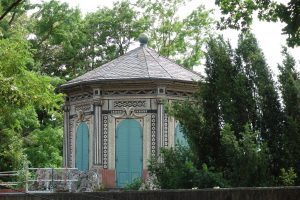 The court sculptors Johann Wolfgang van der Auvera, Johann Peter Wagner and Ferdinand Tietz – the “most important German garden sculptor of his time” – created about 300 stone figures for the complex. Ancient deities, allegories and animal representations “move” around in a baroque world of imagination and evoke numerous myths and legends.
The court sculptors Johann Wolfgang van der Auvera, Johann Peter Wagner and Ferdinand Tietz – the “most important German garden sculptor of his time” – created about 300 stone figures for the complex. Ancient deities, allegories and animal representations “move” around in a baroque world of imagination and evoke numerous myths and legends.
If you want to get to know more of the village Veitshöchheim, the garden can also be combined with a local tour (duration about 2 hours). The former garden, fisherman and winegrowers settlement today has about 10,000 inhabitants and is an independent municipality with lots of culture and a high quality of life.
A trip here is usually done with the boats of the “White Fleet” from Würzburg. Also take a walk along the Main promenade and eat typical fish platters or ice cream. Worth seeing are also the parish church of St. Vitus, the Old Synagogue, the historic Zehntkeller and the legendary restaurant “Fischerbärbel”. From the Mainfrankensäle Bavarian public TV always transmits the popular “Franconian Carnival”!
Meeting point: Rococo Garden at the “Löwentreppe” or pick up at the jetty
Click here for my fees and here you can book me
„Shalom Würzburg!“ – On the tracks of Jewish history
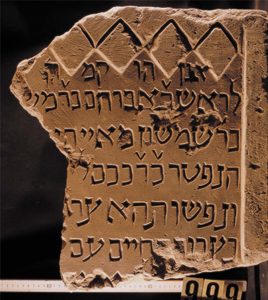 “It was when Rabbi El’asar died … that the sources of wisdom were clogged”: This inscription on one of the medieval Jewish tombstones from the quarter Pleich shows that the Jewish community in Würzburg once belonged to the most important scholars in Europe.
“It was when Rabbi El’asar died … that the sources of wisdom were clogged”: This inscription on one of the medieval Jewish tombstones from the quarter Pleich shows that the Jewish community in Würzburg once belonged to the most important scholars in Europe.
For 900 years there has been Jewish life in the city – a story with dramatic twists. After a “Golden age” of the Würzburg Jews in the High Middle Ages, it often came to discriminations, disenfranchisements and persecutions. For centuries, Jews were abused as a plaything of interests between citizens and rulers.
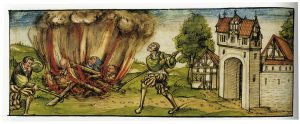 But not even the Shoa in Second World War could permanently wipe out Israelite life in Würzburg. Today, again more than 1,000 Jewish citizens live among us.
But not even the Shoa in Second World War could permanently wipe out Israelite life in Würzburg. Today, again more than 1,000 Jewish citizens live among us.
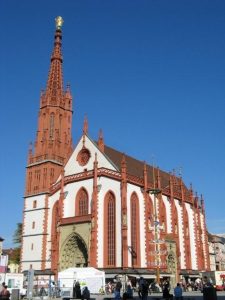 The tour follows in the footsteps of Jewish history in Würzburg. From the Pleich quarter, the site of the found tombstones of the middle ages, we will reach St. Mary´s Chapel – where the synagogue and the Jewish quarter in the Middle Ages were located. The route then continues via St. Kilian´s Cathedral to the Bibra- and Domerschulstraße – the centers of Jewish education and religious practice in the 19th and 20th centuries.
The tour follows in the footsteps of Jewish history in Würzburg. From the Pleich quarter, the site of the found tombstones of the middle ages, we will reach St. Mary´s Chapel – where the synagogue and the Jewish quarter in the Middle Ages were located. The route then continues via St. Kilian´s Cathedral to the Bibra- and Domerschulstraße – the centers of Jewish education and religious practice in the 19th and 20th centuries.
Meeting point: Entrance to the church of St. Gertraud, district of Pleich
Click here for my fees and here you can book me
“Locks, breweries and fried fish” –
Würzburg’s oldest district Mainviertel
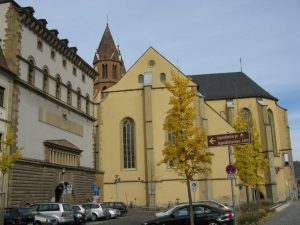 The “Meeviertel” has always been thriving in the shade not only of the fortress mountain behind, but also of the “Old Town” on the other side of the river with the cathedral, city hall and market square. But here once used to be the entrance gate from Frankfurt into Würzburg. And the former fishing, brewing and craft district is indeed Würzburg’s oldest and has preserved its own life.
The “Meeviertel” has always been thriving in the shade not only of the fortress mountain behind, but also of the “Old Town” on the other side of the river with the cathedral, city hall and market square. But here once used to be the entrance gate from Frankfurt into Würzburg. And the former fishing, brewing and craft district is indeed Würzburg’s oldest and has preserved its own life.
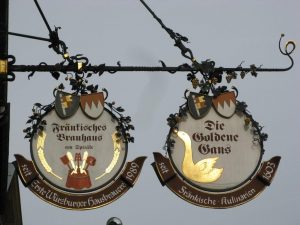 Important scenes of the city´s history play here: the first people settled on the fortress hill as early as the Bronze Age, fishermen founded a village on the banks of the Main long ago. And in the 8th century Würzburg’s first monastery was erected here, founded by the English Benedictine Burkard, who became the first bishop of the diocese.
Important scenes of the city´s history play here: the first people settled on the fortress hill as early as the Bronze Age, fishermen founded a village on the banks of the Main long ago. And in the 8th century Würzburg’s first monastery was erected here, founded by the English Benedictine Burkard, who became the first bishop of the diocese.
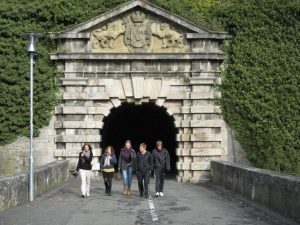 Worth seeing are the Burkarder- and the Deutschhauskirche, the Burkarder Gate with the old channel and lock chamber, the former women’s prison and the Neumann houses. Very lively and partly in local dialect, the poet Leonhard Frank, who grew up here, describes the hustle and bustle in the Mainviertel at the end of the 19th century. Quotes from his novel “The robber gang” bring the old Würzburg to life.
Worth seeing are the Burkarder- and the Deutschhauskirche, the Burkarder Gate with the old channel and lock chamber, the former women’s prison and the Neumann houses. Very lively and partly in local dialect, the poet Leonhard Frank, who grew up here, describes the hustle and bustle in the Mainviertel at the end of the 19th century. Quotes from his novel “The robber gang” bring the old Würzburg to life.
Meeting point: Alte Mainbrücke, Caféhaus Brückenbäck (fortress side)
Click here for my fees and here you can book me
(Photos on this page: S. Wagenbrenner, Stadtarchiv Würzburg)
